Murder, myth, devotion: Amy Russo shares stories from Providence's North Burial Ground
Among the 110 acres of Providence’s North Burial Ground live more than 40,000 stories, some true, some folklore and some a mystery.
Lichens making their slow crawl across the stones hint at what grew in the soil when the dead were interred. Etchings offer stories of love and loss, and missing dates and details leave visitors to fill in the blanks left empty over time.
For years, the story of “Broken Hearted Mary” fell victim to imagination, thanks in part to an article in the Rochester Democrat & Chronicle.
“It says in it that the North Burial Ground staff believed that it was erected in wartime, and the stone marks the end of a wartime romance, which is not true,” said the cemetery's director, Annalisa Heppner, a trained archaeologist. “She died of tuberculosis. She was brokenhearted because two of her three children had died. She was separated from her husband.”
Amy's Rhode: What makes a great clam cake? Amy Russo finds out at the Charlestown Seafood Festival
Amy's Rhode: What's it like to work the boats at WaterFire Providence? Amy Russo was stoked to find out
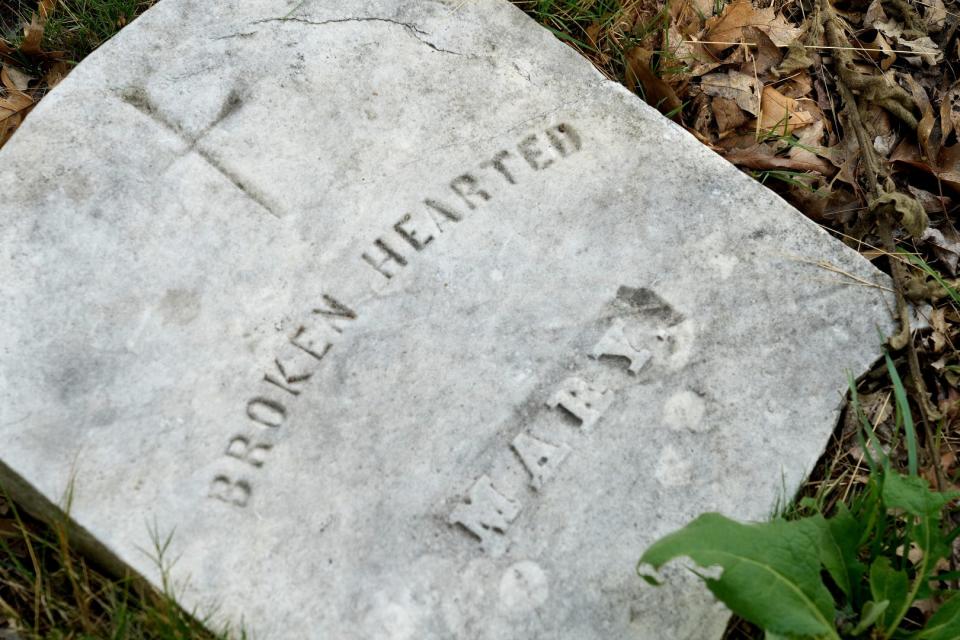
Maryann Dutch, who died in 1864 and was buried alone, is what Heppner called an example of “cemetery myth-making” debunked by those who’ve scrolled through the annals of Ancestry.com.
“It shows me that even 40, 50 years later, people are coming to the cemetery, seeing something that captures their imagination and are starting to tell stories about it,” Heppner said. “And I think that’s one of the most fun things you can do in here, is kind of wander around and imagine what people were like, what their lives were like.”
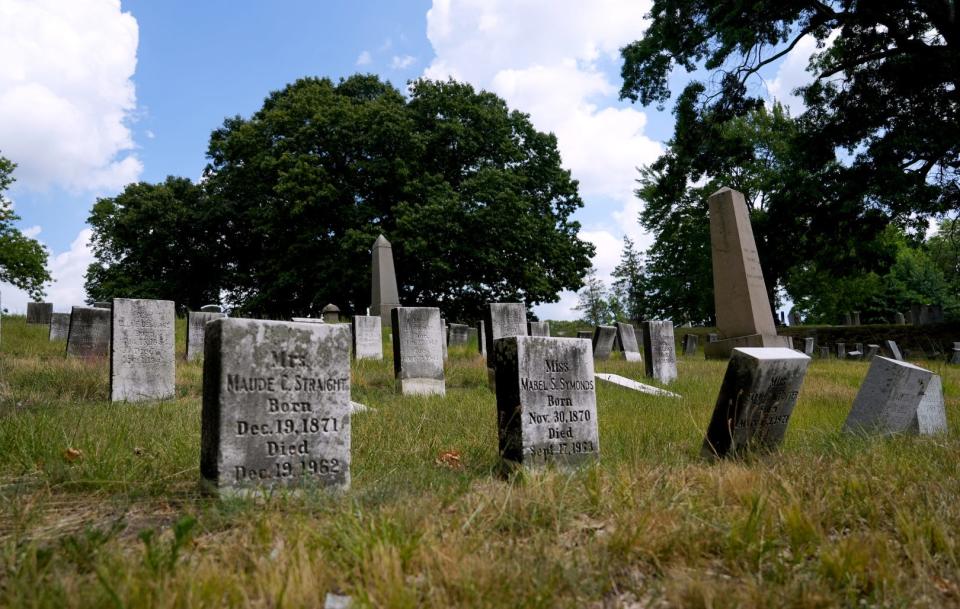
Murdered by her husband, but beside him for eternity
For many at the time, life was merely a hardship.
“Oh! tis a trying thing to be bereft of life by the vile hand of him who called her wife,” reads the gravestone of Freelove Ball, who was murdered by husband Elijah in 1836. “And those who read may thus infer from hence that this rash act sprung from intemperance!”
Amy's Rhode: Amy Russo learns about golf — and grit — on the green at Button Hole
Amy's Rhode: Clams and cannon fire? Amy Russo has a blast at a historical clambake in East Providence
As the description suggests, Ball’s death is blamed in part on her husband’s drunken rage, its timing coinciding with the start of the temperance movement in the U.S., which had been entwined with the women’s suffrage movement.
Today, the stone’s brief message, nicked by weed whackers and lawnmower blades, is what remains of Ball’s story. Her husband, whose death sentence was commuted to life in prison, lies by her side — an “ironic twist,” Heppner said.
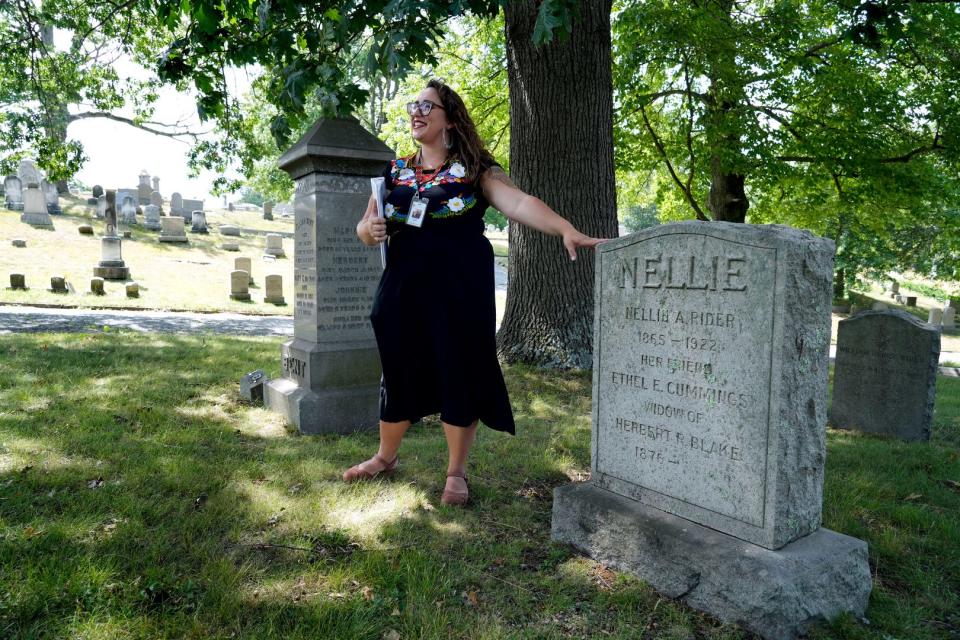
In another plot, it is not husband and wife side by side, but a woman and her companion. Nellie Rider, who had been a chief clerk for the superintendent of health and who died in 1922, is buried with Ethel Cummings, who was born in Massachusetts and became the widow of a banker named Herbert.
Amy's Rhode: Amy Russo tests the waters with a kayak trip on RI's 'wild and scenic' Wood River
Amy's Rhode: What's a BioBlitz? Amy Russo joins volunteers recording abundant life in ordinary places
Herbert is nowhere to be found in the cemetery, and there exists no record of Rider having married.
“We don’t really know what Nellie and Ethel’s actual relationship would have been, if they were in a romantic relationship or even if they were really truly just best friends buried together,” Heppner explained.
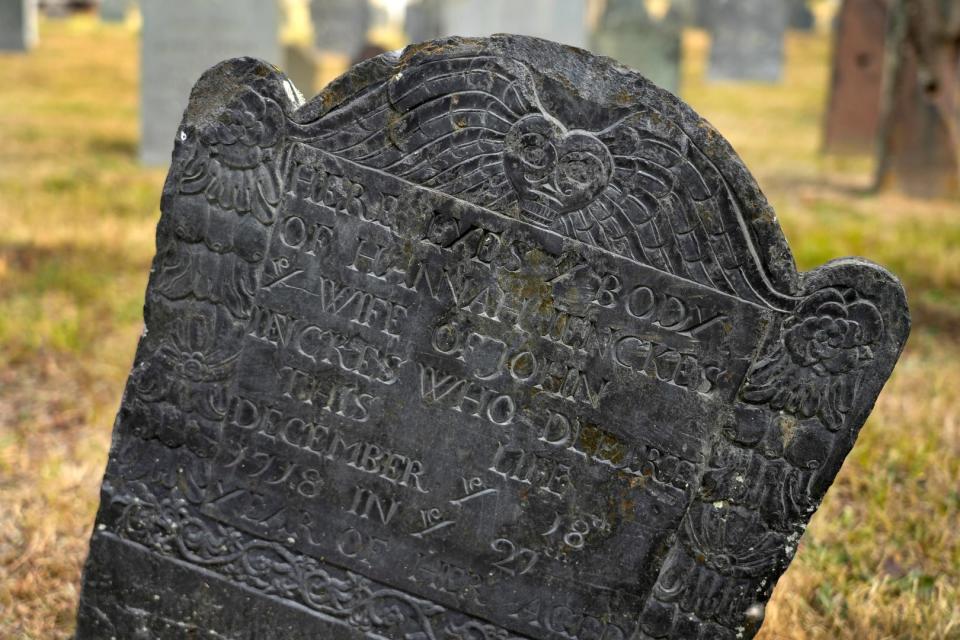
Two Revolutionary figures whose lives were 'worlds apart'
Some stories here are known, but untold.
Within eyeshot of the grave of former Rhode Island Gov. Stephen Hopkins, a slave owner who signed the Declaration of Independence, lie Charles and Lucy Haskell.
Their names probably don’t ring a bell for most Rhode Islanders, as their stories are perhaps less remarkable.
Amy's Rhode: Which famous figures have visited RI's Kingston Village? Amy Russo follows their footsteps
Amy's Rhode: As Providence's Graduate hotel turns 100, Amy Russo checks into all those spooky rumors
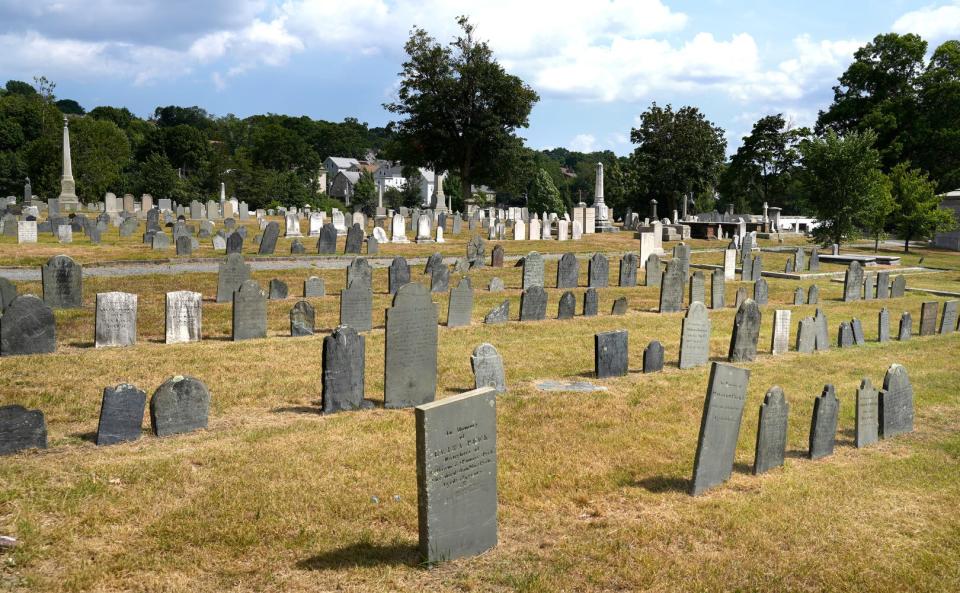
Charles, a Revolutionary War soldier and a free Black man whose grave sits near a row of headstones of enslaved people, worked as a servant for a fellow veteran and saw his pension denied. That record serves as the primary piece of information remaining on his life. Through help from his boss and friends, he was eventually able to receive it, but not without a fight.
Amy's Rhode: Amy Russo gets a wall-to-wall RI history lesson at a Colonial farmstead in Lincoln
Amy's Rhode: Gravestones tell a lively story about Westerly granite on Amy Russo's cemetery tour
“The experiences that these two men had during the Revolutionary period were worlds apart,” Heppner said. “What was the promise of the Revolution for Charles Haskell versus … the promise of the Revolution for Stephen Hopkins?”
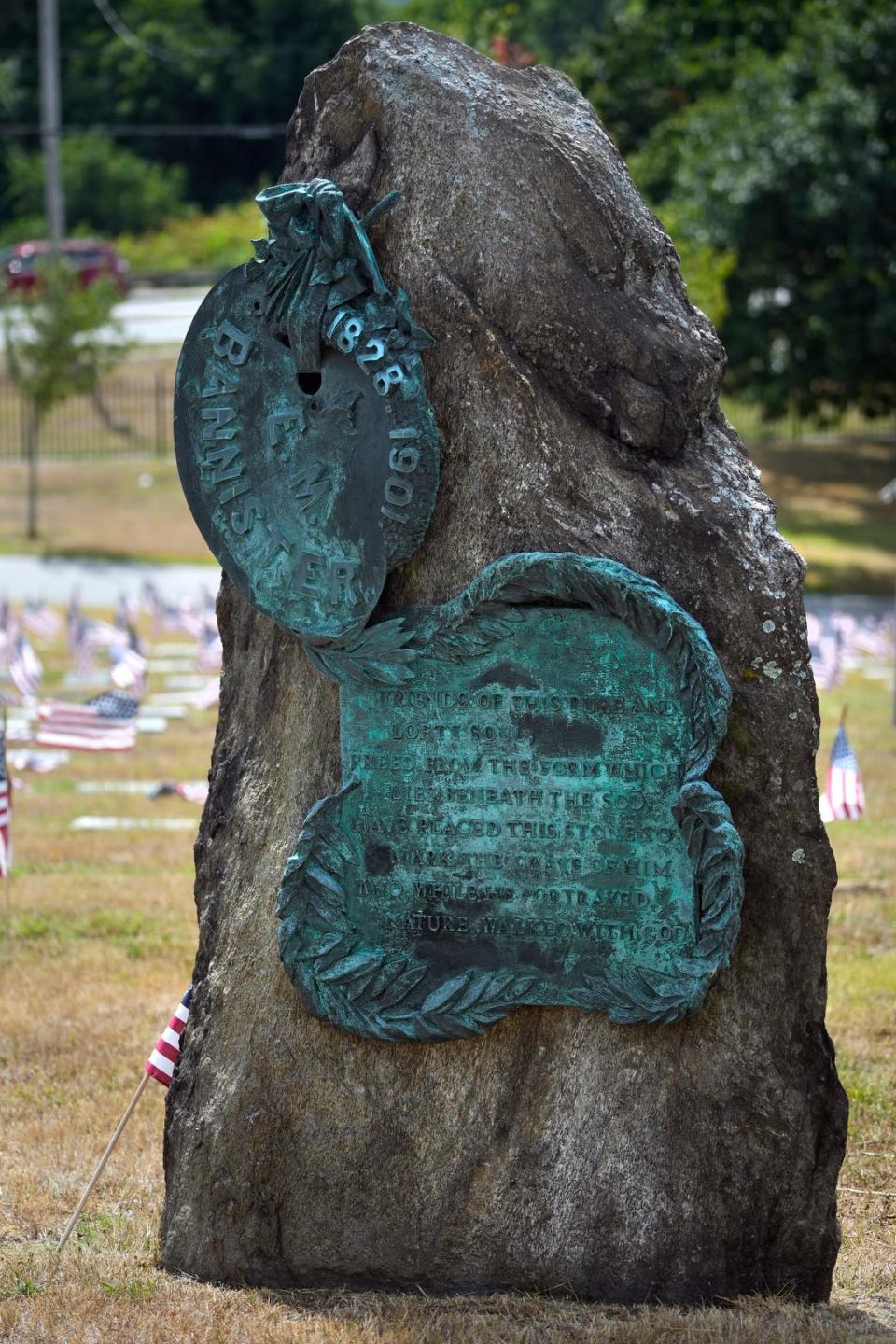
Though this place is a home for the dead, it is here that such questions live on.
“You’re right in that very personal space of someone’s experience of their life and their death,” Heppner said. “And I think cemeteries are just one of the best ways to really encounter these periods of history.”
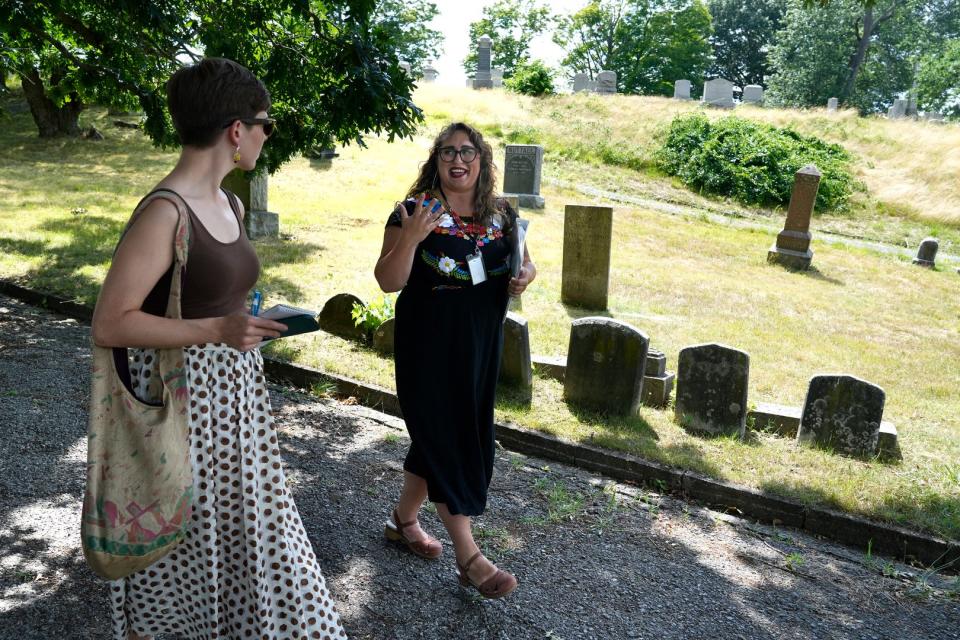
Interested in visiting the North Burial Ground? Try a self-guided tour with a map available at the cemetery office, or plan a private tour by calling (401) 680-5318 or emailing northburialground@providenceri.gov.
Providence Journal staff writer Amy Russo, a transplanted New Yorker, is looking for new ways to experience her adopted state. If you have suggestions for this column, email her at amrusso@providencejournal.com.
This article originally appeared on The Providence Journal: Murder, myth, devotion: Stories from Providence's North Burial Ground

